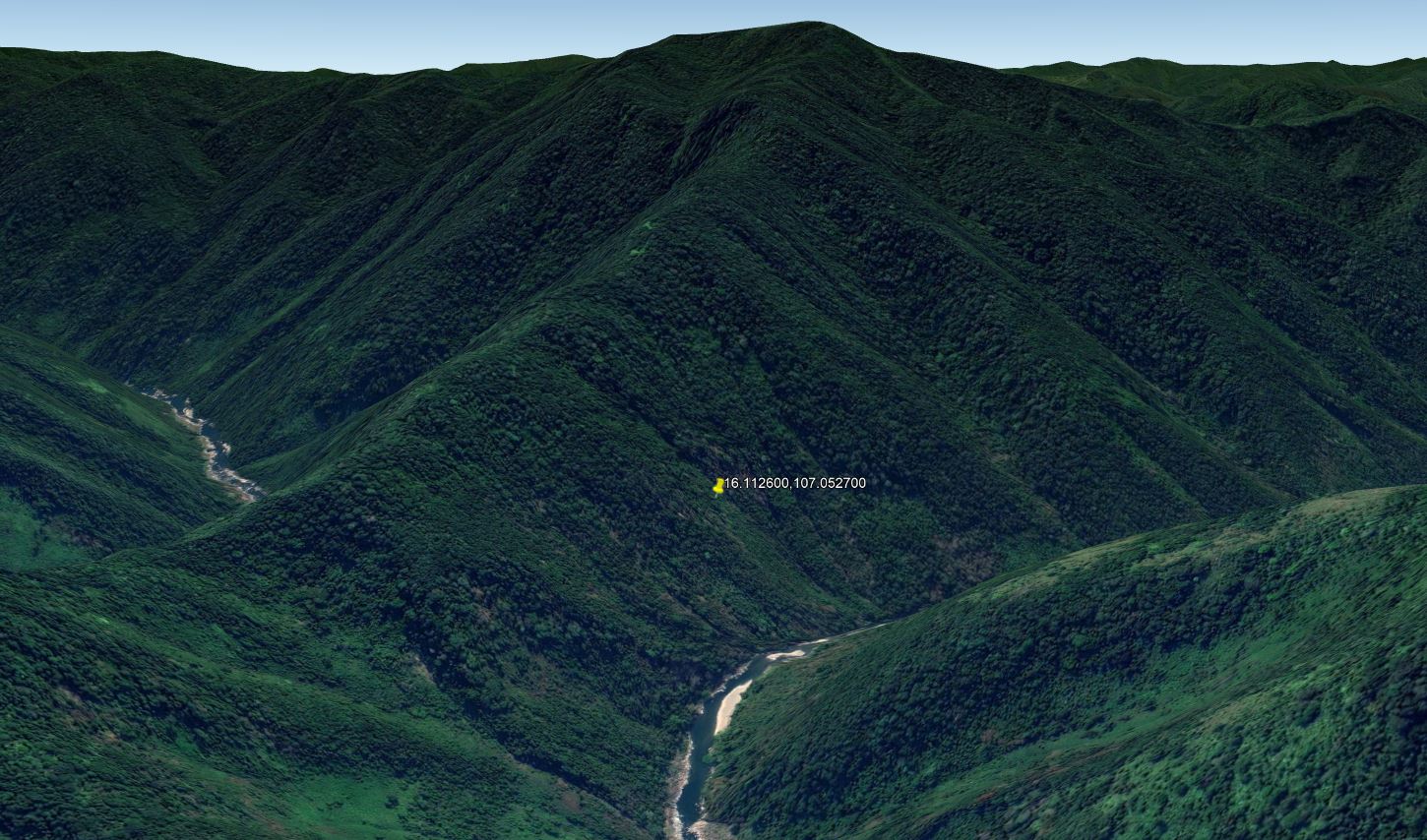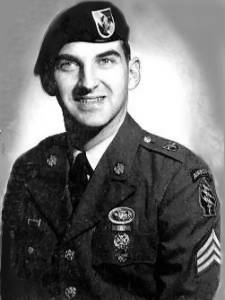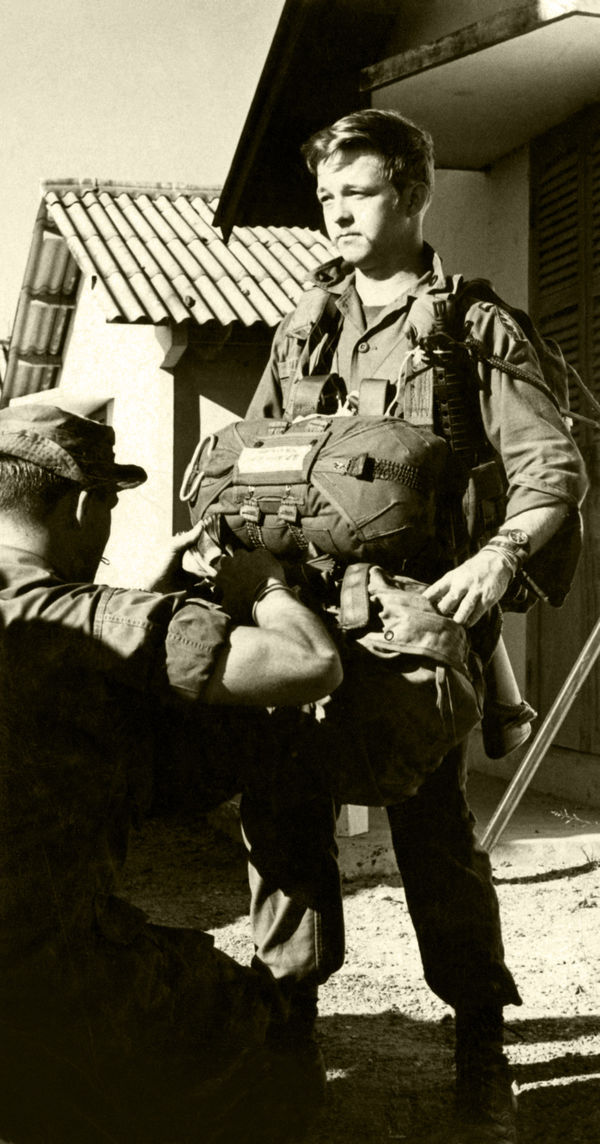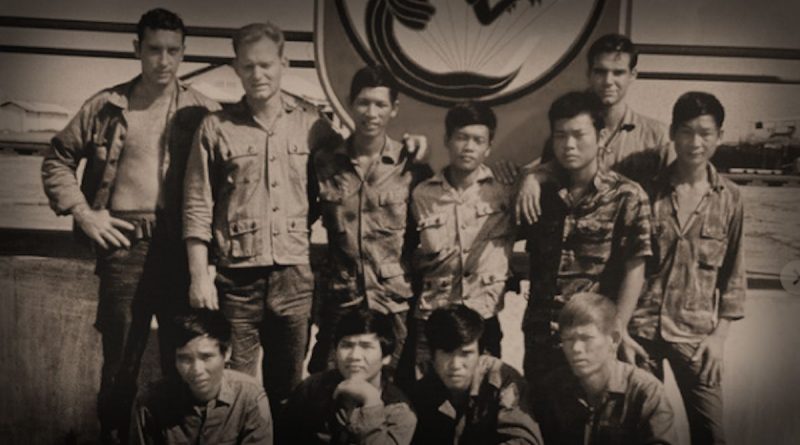Never Forget: RT Fer-De-Lance
On this date 50 years ago a small Military Assistance Command Vietnam – Studies and Observation Group (MACV-SOG) reconnaissance team found themselves outnumbered and surrounded by the North Vietnamese Army units in Laos, just ten miles or so west of the infamous A-Shau Valley.
Staff Sgt. David A. “Baby-san” Davidson led the joint American-Vietnamese reconnaissance team, codenamed RT Fer-De-Lance. Davidson had earned a tremendous amount of respect during his three years with SOG, and before that, was among the first U.S. combat troops in South Vietnam with the 101st Airborne Division in 1965. His assistant team leader was Sgt. Fred A. Gassman and the remaining men were Nung commandos.

After RT Fer-De-Lance inserted, enemy North Vietnamese soldiers began searching for the small group. At about 1300 hours, the enemy was on three sides of the soldiers and closing in.
The fight was on that evening. Davidson was the first to go down, hit in the head with machine-gun fire which sent him tumbling down a ravine. Heavily outnumbered and running out of ammunition, Gassman and his remaining squad fought off the assault while trying to coordinate an emergency extraction, but clouds obscured the area. The team had to hold out on their own until morning. made that impossible. An orbiting forward air controller (FAC) advised them that air support was available, but only if they could be vectored in via the team’s homing beacon — which fell down the cliff with Davidson.
That equipment was the only way anyone was going to live through the night, and that meant Sgt. Gassman would have to go on a suicide mission to recover it. “Here goes nothing,” he told the FAC, “Wish me luck.”
Gassman returned with the beacon and his fallen comrade’s body, but as the assistant team leader was calling in air strikes, his “luck” ran out. Enemy fire blew a gaping hole in his back. The surviving reconnaissance team members were extracted, but the heavy enemy presence kept search-and-rescue forces from recovering the bodies of Davidson and Gassman.

A witness statement from the forward air control pilot, Capt. Evan J. Quiros (from the Coffelt Database):
“On 5 October 1970, at approximately 1300 while on a visual reconnaissance mission, recon team Fer-De-Lance came up on [illegible radio frequency] said he wanted to advise that he had movement 100 meters to his North. After finishing the visual reconnaissance I went to recon team Fer-De-Lance’s area. After orbiting for twenty minutes the team leader [Staff Sgt. Davidson] came up and said he had movement on three sides. I returned to refuel and launched again at 1810 hours to obtain an remaining-over-night position from the team. As I approached the area the assistant team leader [Sgt. Gassman] came up on his emergency radio and declared an emergency extraction. He was excited and asked me to put down some ordnance. I tried several ways to reach his position but was unable because of the weather. It was night by now and visibility was less than a mile. I asked the assistant team leader to calm down and give me his status. At this time he calmed down and stated that the team leader had been hit and had fallen off a cliff and that they were taking fire from three sides, he was low on ammunition and requested immediate extraction. I told him extraction was impossible. At this time he became very calm and asked me if I had any suggestions. I asked him to find his homing-deice and I would launch a Stinger Gunship. He acknowledged and I requested a scramble launch of the gunship. I was told the gunship would arrive on scene in approximately forty-five minutes. I called the assistant team leader again and told him what I had done and he replied that the missing team leader had the instrument on him. I told him his only hope was to retrieve it. He said he would try and then said “here goes nothing — wish me luck. I did and he came up about five minutes later and said “I’ve been hit — and in the worst way.” There were several groans and then the radio went dead. About twenty minutes later a Commando came up on guard frequency and said he was moving North. I rogered and told him we would be back at first light to pull him. He acknowledged and I departed the area. ///// END OF STATEMENT/////”
Sgt. Gassman was posthumously awarded the Silver Star. Records show Davidson as also having earned a Silver Star, but it is unclear whether his was awarded posthumously or prior to his final mission. Whatever their fate — the Department of Defense declared them dead the following day — we should honor their memory. As English novelist and poet George Eliot wrote: “Our dead are never dead to us until we have forgotten them.”

